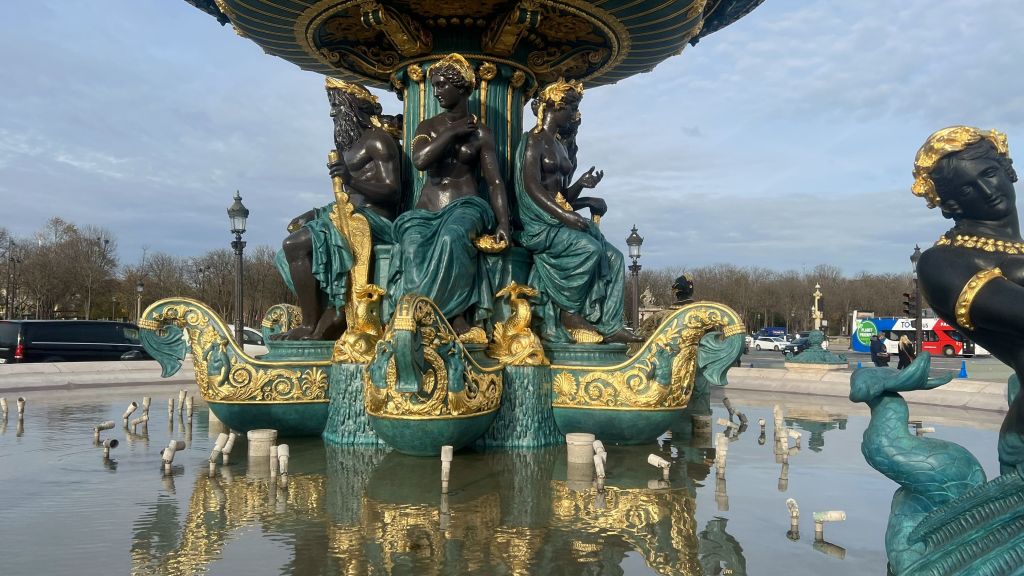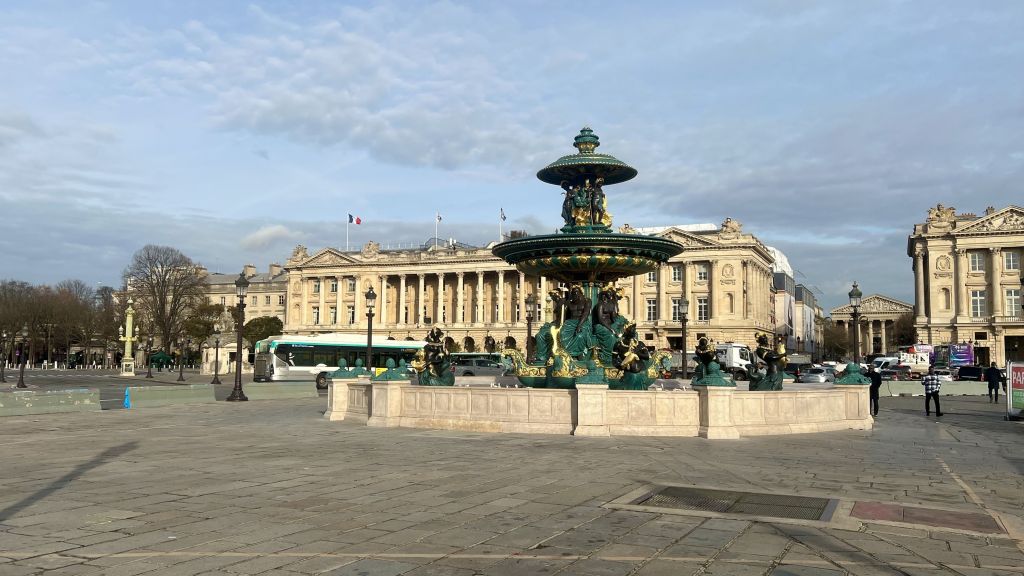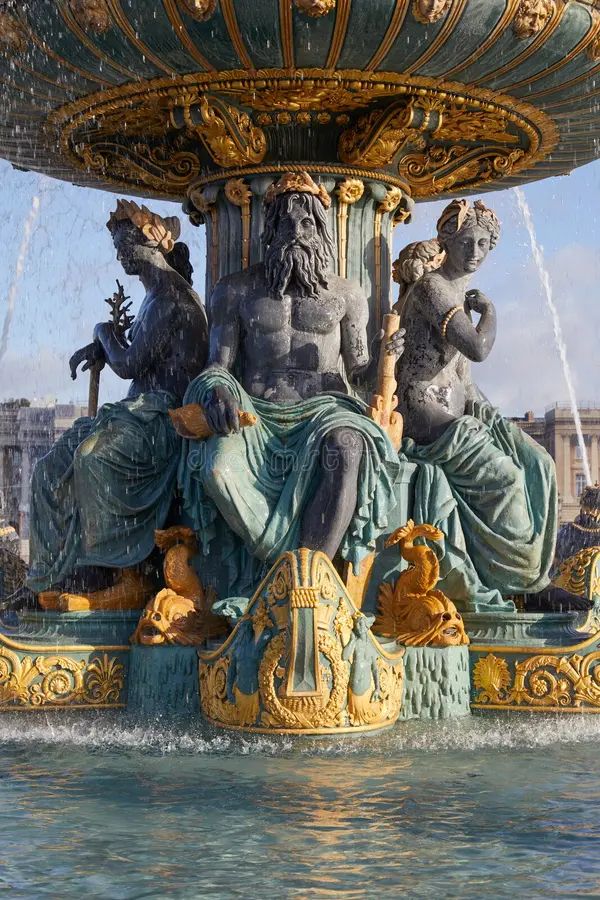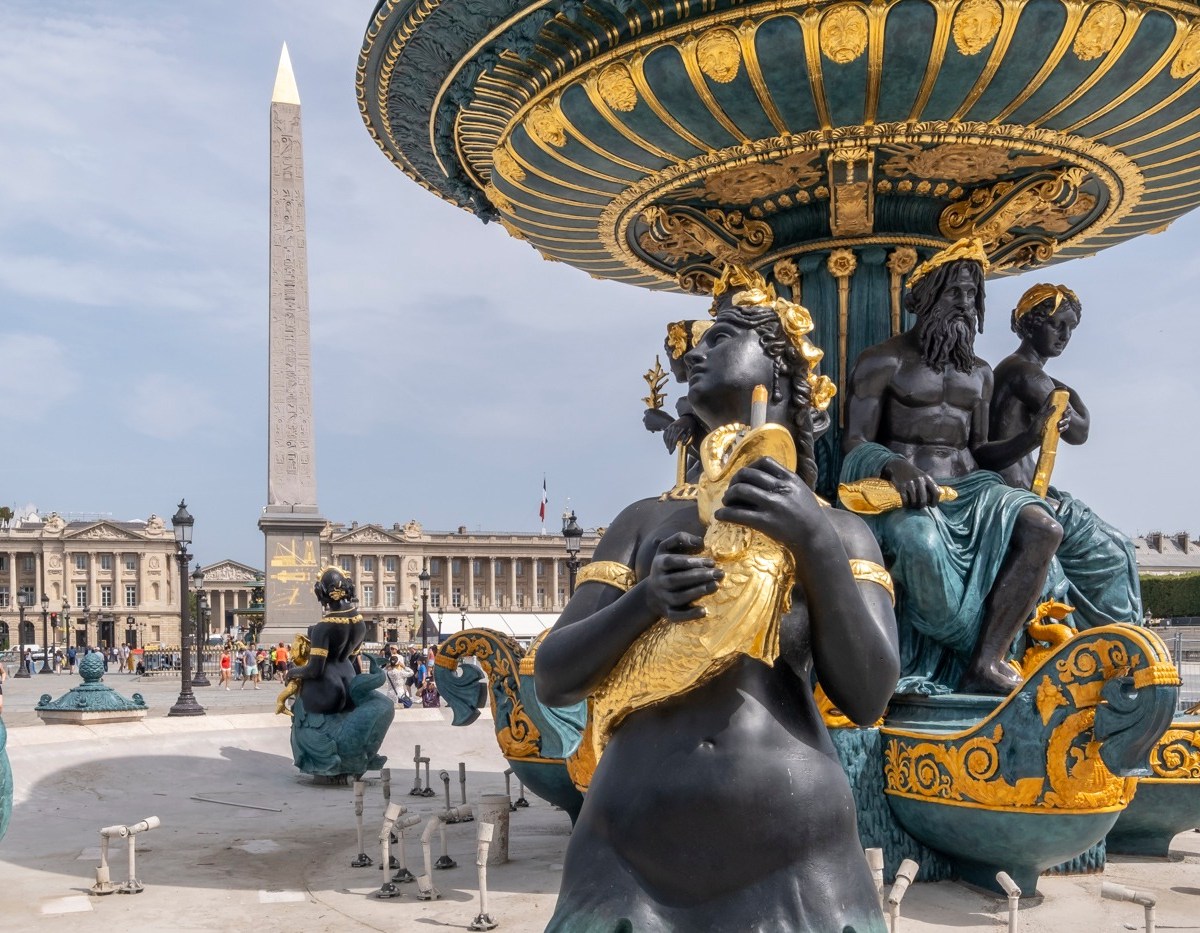The Fontaines de la Concorde, located in the historic Place de la Concorde in Paris, are among the most celebrated landmarks in the French capital. Designed by the renowned architect Jacques Ignace Hittorff and completed in 1840 during the reign of King Louis-Philippe, these two monumental fountains encapsulate the spirit of 19th-century France.
Historical Context: Revitalizing the Place de la Concorde
The Place de la Concorde, infamous for its role during the French Revolution, underwent significant transformation during the 19th century to reflect the stability and elegance of a new era. The fountains were commissioned as part of this redesign, symbolizing progress and national pride.

Design and Symbolism of the Fountains
The South Fountain: Celebrating Maritime Commerce
The southern fountain, often referred to as the Fountain of Maritime Commerce, celebrates France’s global maritime trade and industry. Its design features intricate sculptures of ocean gods, sea creatures, and ships, emphasizing the nation’s reliance on maritime prowess for economic growth.

The North Fountain: Honoring River Navigation
The northern fountain, known as the Fountain of River Navigation, highlights the importance of France’s extensive river network for commerce. It incorporates allegorical figures representing key French rivers, including the Rhône and Rhine, and celebrates the lifeline these waterways provided for internal trade and cultural connectivity.

Architectural Excellence
Hittorff’s design showcases a blend of classical inspiration and innovative techniques. The fountains were influenced by Roman models, particularly those in St. Peter’s Square, but adapted to incorporate French cultural themes.
The use of bronze and cast iron was groundbreaking, enabling intricate detailing and durability.
Positioned to complement the Luxor Obelisk and surrounding architecture, the fountains create a harmonious aesthetic within the square.

Legacy and Modern Significance
Today, the Fontaines de la Concorde are not just decorative elements but symbols of Parisian identity. Illuminated at night, they captivate visitors and locals alike, serving as a reminder of France’s historical, artistic, and industrial achievements.

Conclusion
The Fontaines de la Concorde are much more than fountains; they are monuments to France’s cultural and historical narrative. Combining artistic beauty with historical depth, these masterpieces continue to inspire awe and admiration, ensuring their place as enduring icons of Paris.

